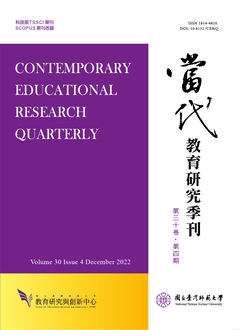

本文採用教育詮釋學方法,對斯泰納的人智學教育學進行探討,主要的研究目的有下列幾項:1.探討斯泰納人智學教育學的思想淵源;2.分析斯泰納人智學教育學的主要內涵;3.評價斯泰納人智學教育學的優劣得失;4.說明斯泰納人智學教育學對我國教育學術的重要啟示。斯泰納主張教育的目的是在培養一個身、心、靈和諧發展,達到善、美、真的理想,懂得感謝、具有愛和自由的人。教師必須配合學生的身體、心靈和精神的發展來進行教育的活動,使兒童的精神心靈能夠達到獨立自主。人類的教育可以分為出生到換牙期、換牙後到青春期、青春期到青年期三個階段,教師必須配合學生的發展,應用各種教學方法來進行週期教學、小班教學和個別指導,促進學生身、心、靈的和諧發展。主張教師必須具備基本道德,擁有想像力,充實醫學知識,履行教育責任,瞭解學生的性格,對真實的感覺和對學生的愛,才能勝任教師的角色,做好學校教育的工作。研究者希望經由斯泰納人智學教育學的探究,暸解其學說的優點與缺點,提供我國做為建立教育理論和改善教育實際的參考。
This article adopts the method of educational hermeneutics to discuss Rudolf Steiner’s anthroposophical pedagogy. Main research aims of this article are as follows: (1) to discuss the origin of Steiner’s anthroposophical pedagogy; (2) to analyze theoretical contents of Steiner’s anthroposophical pedagogy; (3) to evaluate the advantages and disadvantages of Steiner’s anthroposophical pedagogy; (4) to explain the important implications of Steiner’s anthroposophical pedagogy for Taiwan’s educational theory and practice. Steiner claims that aims of education are to cultivate a man not only has harmonic development of body, soul and spirit, but also a man with thankfulness, love, and freedom to reach the ideals of goodness, beauty and truth. The teacher must match the development of student’s body, soul and spirit to engage educational activities. He must make their spirit and soul to achieve the goal of independence. The education of human beings can divide into three stages: from birth to tooth change, from tooth change to adolescence and from adolescence to youth. The teacher must match student development with methods to apply circle instruction, small class teaching and individual direction, in order to enhance harmonic development of student’s body, soul and spirit in these stages. The teachers must have basic morals, imagination and medical knowledge, to fulfill educational responsibility, to understand student’s character, to feel the reality and to love students, then the teacher can fit their roles and do their job well in school. I hope to understand advantages and disadvantages about Steiner’s through the inquiry into this anthroposophical pedagogy. Then, I will offer it as reference, in order to build educational theory and to improve educational practice for Taiwan.

本著作係採用創用 CC 姓名標示-非商業性 3.0 台灣 授權條款授權.
本刊國立台灣師範大學教育研究與創新中心
106台北市和平東路一段162號 | 電話: 02-7749-3670 | E-mail: cerecerq@gmail.com
教創中心 | 師大 | 電子報 | 線上投審系統
本刊由國家科學及技術委員會人文社會科學研究中心補助經費
© 2014 CERI-NTNU
